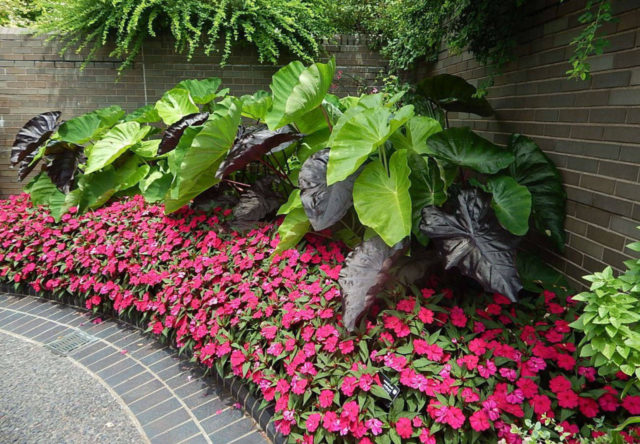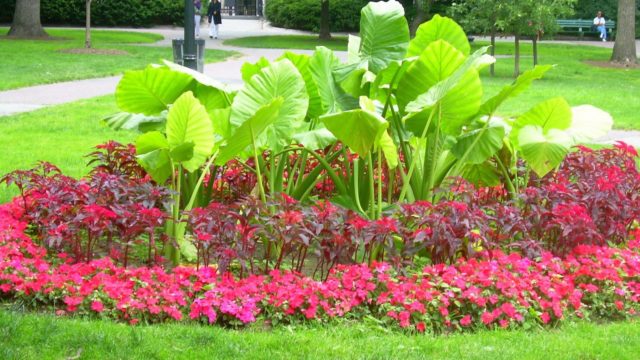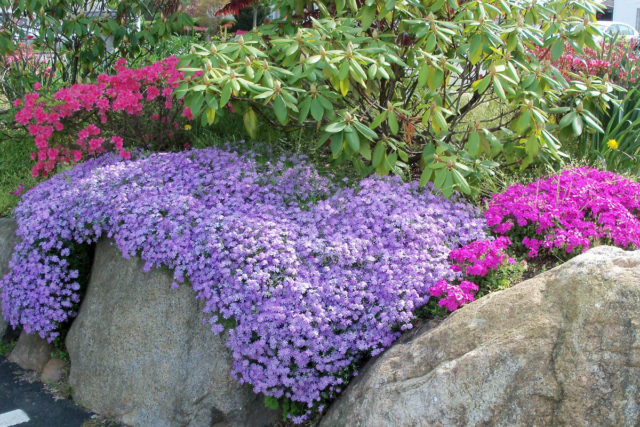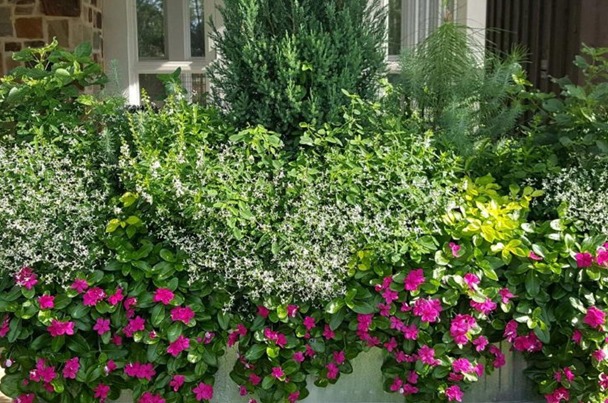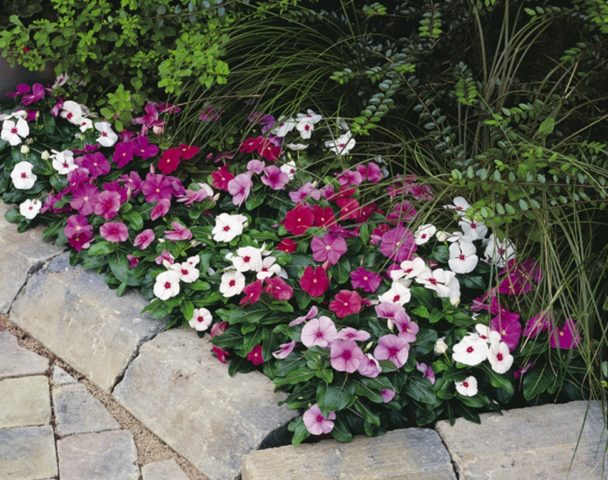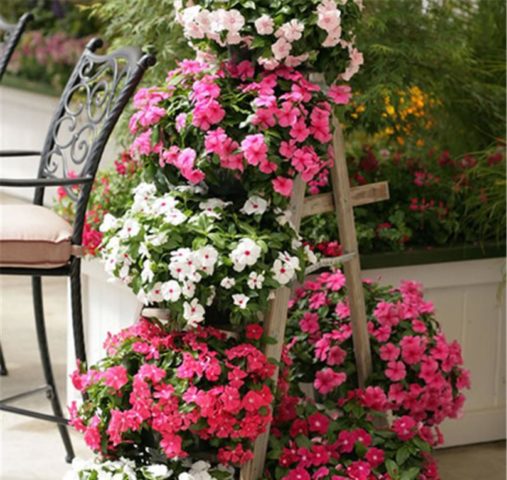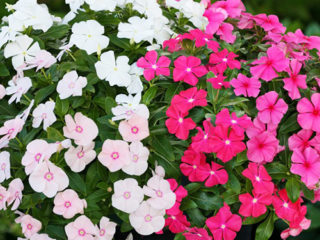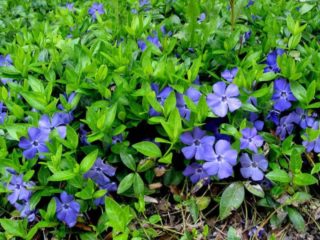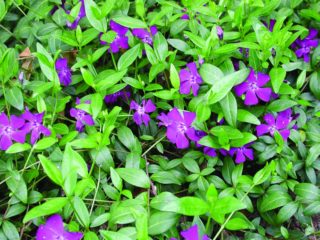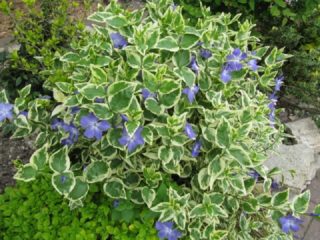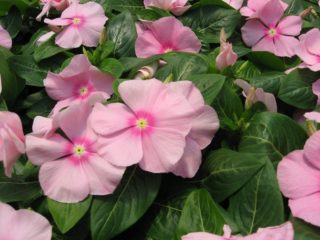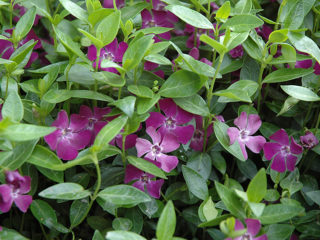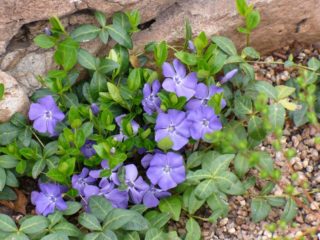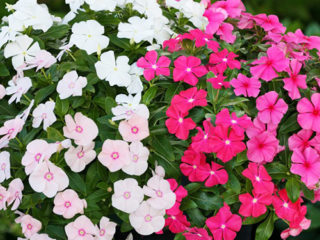Content
Kiff's periwinkle is a perennial herbaceous shrub with creeping stems. A variety was created for hanging cultivation. But the culture is also suitable for cultivation in open areas; it is used as a ground cover plant.
Description
Kiff's periwinkle (Vinca rosea) or catharanthus is a dwarf variety that grows in the form of a herbaceous shrub with creeping shoots. Characteristics of the variety:
- The bush is compact, with high shoot formation, grows in height up to 25 cm, crown diameter – 20 cm.
- The lower stems are located close to the ground, the next ones weave from above in a chaotic direction. The result is a cushion-shaped dense clump of green mass.
- Kiff's periwinkle is a densely leafy plant, the leaves are collected in rosettes of 3-5 pieces, the plates are hard, glossy, lanceolate, dark green. They do not change color with the onset of autumn, go under the snow and retain their appearance until spring.
- The flowers are simple, five-petaled, lilac or dark pink, quite large for a dwarf form, about 4.5 cm in diameter. They are located in the leaf axils. During the flowering phase, the bush is completely covered with a purple cloud.
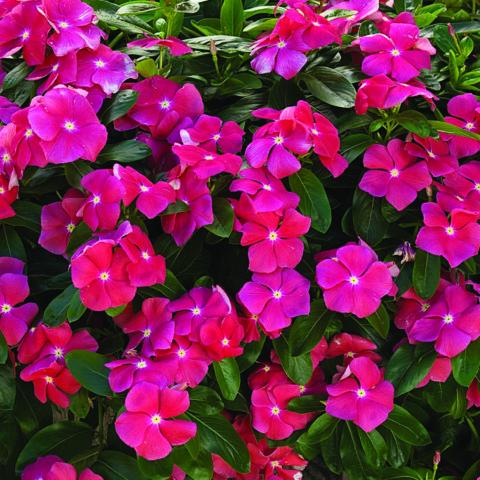
Periwinkle blooms in May, the buds do not bloom at the same time, the cycle lasts until June, in the south budding resumes in autumn
Growing from seeds
They mainly use the generative method of reproduction. The planting material germinates well, but not well. To speed up the process, grow periwinkle seedlings or sow seeds directly onto the plot. The time of sowing is guided by the weather conditions of the region. The Kiffa variety will be ready for planting in 1.5 months.
Seedlings are placed on the site in the spring, after warm weather sets in. For seedlings, seeds are sown in containers filled with nutrient substrate. They germinate at +20-250 C.
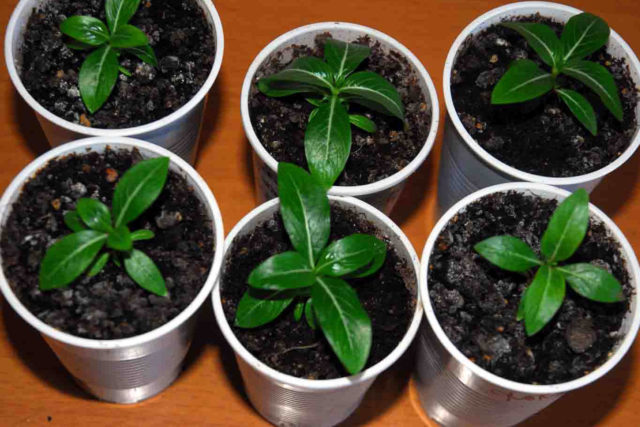
After the formation of 3-4 leaves, Kiff's periwinkle is dived into separate containers
Seed preparation
The seeds are placed in a wet cloth and placed in the refrigerator for several days for stratification. Before sowing, they are dipped in a manganese solution; disinfection can be carried out with any antifungal drug. After disinfection, the planting material is treated with a growth stimulator.
How to sow
Kiff's periwinkle is sown in well-moistened soil. For seedlings, prepare a mixture of compost and peat, add nitrogen fertilizers.
Sowing:
- Make longitudinal grooves 1.5 cm deep.
- Maintain 8-10 cm between them.
- Sow the seeds, cover them with soil, water them and cover them with film. After emergence of seedlings, the covering material is removed.
If the seeds are planted on the site, then the film is returned to its place at night and removed during the day.
Planting in open ground and care
Kiff's periwinkle can grow in any soil. The culture is undemanding to lighting.The speed of vegetation and the abundance of flowering do not depend on ultraviolet radiation. Periwinkle grows both in sunny places and in the shade, and feels good in stationary conditions.
Landing sequence:
- The area is dug up and weed roots are removed.
- Add compost with peat.
- For seeds, furrows are made with a depth of 1-2 cm. If seedlings are placed, then the dimensions of the hole are adjusted to the size of the root; it must be completely deepened.
- Kiff's periwinkle is sown without spacing. The thickened planting is thinned out, and the material is planted anywhere on the site. The seedlings are placed at a distance of 10 cm.
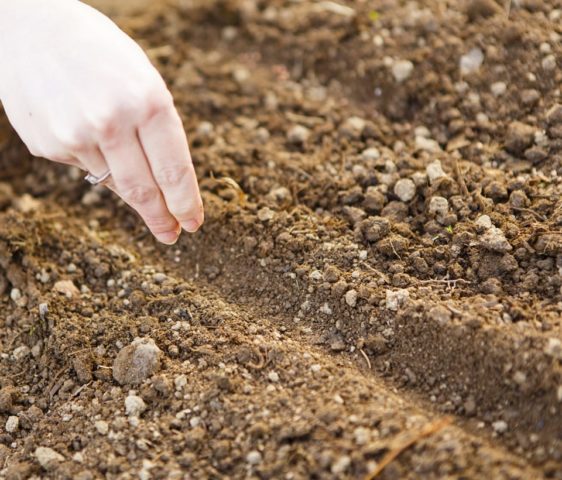
After planting, the seeds are covered and watered with a solution of a nitrogen preparation.
The work is carried out in the spring, when the soil has warmed up to +150 C, or in August. Kiff's periwinkle has a high level of frost resistance; if the seeds are planted in moist soil, they will quickly germinate and overwinter safely.
Plants are watered regularly throughout the season. Kiff's periwinkle does not respond well to dry soil. Watering is carried out with a sufficient amount of water. The root circle should be moist, but without stagnant water. In regions with frequent rainfall, seasonal rainfall is sufficient for the crop.
Periwinkle can grow without fertilizers, but for better growing season it is recommended to feed the crop with nitrogen during planting. During flowering, complex mineral fertilizers are used, and organic matter is added at the end of summer.
Diseases and pests
Kiff's periwinkle is resistant to fungal and bacterial infections, the plant rarely gets sick. In the dry season, with a lack of moisture, the leaf blade loses turgor. But this happens with incorrect agricultural technology. To make the problem disappear, it is enough to water the crop.
Periwinkle is a poisonous plant with bitter juice, so pests rarely appear on it. The only parasitic insect is the aphid. To get rid of its invasion, anthills are removed from the area, and the plant is treated with Kinmiks.
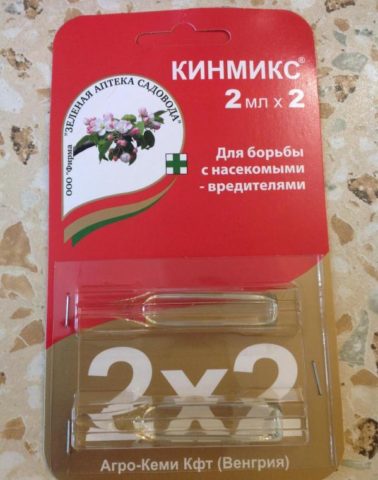
It is necessary to spray not only problem bushes against aphids, but also nearby crops.
Trimming
Stems that spoil the decorative appearance of the plant are cut off after flowering. At the beginning of the season, corrective and sanitary pruning is carried out. Remove all dry and weak stems. If the periwinkle is too thick, cut off the twisted old stems in the central part. The culture is perennial, with intensive shoot formation, so it is rejuvenated once every 4 years. To do this, the green mass is completely removed in the fall.
Preparing for winter
The culture is frost-resistant; periwinkle rarely freezes out. Even if the above-ground part is damaged, a small fragment of a healthy root is enough for the plant to fully recover within a season. To protect against the cold, the young periwinkle is covered with spruce branches. An adult crop is given moisture-recharging irrigation and fertilized with a phosphorus agent.
Reproduction
To propagate Kiff's periwinkle, not only the generative method is used. Culture can be obtained:
- By layering. In the spring, the lower stems are dug in; in August, the established and rooted shoots are separated from the mother bush and planted in a permanent place of growth.
- Cuttings. They are harvested in the spring before flowering; this can be done during formative pruning of the crown. The cuttings are immediately placed in fertile soil or in a container with water.
The cuttings are left on the site until spring; they are well insulated for the winter. In water, the material gives roots in 3-4 weeks. After this, the cuttings can be planted in a flower pot or taken out to the site.
Dividing the mother plant is used less frequently; the plots take root quickly and safely.
Photo in landscape
Kiff's periwinkle is a dwarf form of culture. The plant is mainly used as a ground cover. Ideas and photographs of Kiff's periwinkle in garden design will help you create an unusual corner in any area:
- Ground cover plants, including the Kiffa variety, are often used to create borders.
- Periwinkle can be grown as a lining for tall plants around the perimeter of a flower bed.
- Climbing plants are often used to decorate rockeries.
- An interesting solution - vertical gardening of tiered structures
- A mixborder created from the contrast of flowers of different varieties is sure to attract attention.
- Ampelous views on a portable structure are suitable for decorating any corner of the garden.
Conclusion
Kiff's periwinkle is an ornamental crop that is used for growing in greenhouses, rooms and outdoor areas. The plant is frost-resistant, undemanding to lighting, and is characterized by simple agricultural technology. Used to decorate rockeries and vertical gardening. With the help of seedlings, border compositions are created. Periwinkle is not susceptible to disease and is rarely affected by pests.
